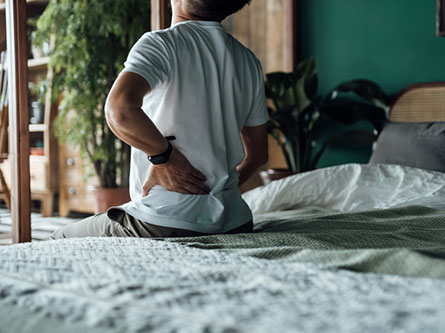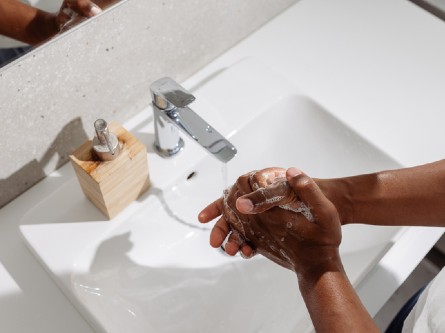
Back pain is one of the most common reasons people visit the doctor. You will probably experience low back pain at some point in your life. The reasons vary, from acute sprains from sports injuries to chronic health conditions.
UC Davis family and community medicine doctor Joshua Fenton answers the top 10 questions people ask about low back pain. He weighs in on safe home remedies, when you may need imaging such as X-rays and MRIs, and helpful exercises to deal with the pain.
1. What causes low back pain?
There are many possible causes of back pain, but the most common ones are muscle or ligament strain. Sometimes, the pain may come from a herniated disc, arthritis or narrowing of the spine (spinal stenosis). Arthritis and spinal stenosis are more common in older adults. Infections or more serious conditions can also cause back pain, but those are much less common.

2. When should I see a doctor for low back pain?
Usually, acute pain between the lower edge of the ribs and the buttocks is temporary and not serious. Most mild back pain improves within a few days to a few weeks. But you should see a doctor if:
- The pain lasts longer than 2-4 weeks.
- It spreads down one or both legs.
- You feel numbness, tingling or weakness.
- You have trouble controlling your bladder or bowels.
- You’ve had a recent injury or fall.
- You have unexplained weight loss or fever.
- You’ve been treated for cancer or human immunodeficiency virus (HIV).
These may be signs of a more serious problem that needs medical attention.
3. Can exercise make back pain worse or help it?
In most cases, exercise helps. Avoid heavy lifting or twisting movements at first, but gentle stretching and strengthening exercises can speed recovery. Focus on core and back muscles as they support your spine. A physical therapist can show you which movements are safest for your specific pain.
4. What’s the difference between sciatica and regular (uncomplicated) low back pain?
Sciatica is a type of back pain caused by irritation or pressure on the sciatic nerve, which runs from your lower back down your legs. It usually causes sharp, shooting pain, numbness or tingling down one leg. Regular back pain stays mainly in your lower back and doesn’t travel down your legs.
5. Should I get an MRI or X-ray for my low back pain?
Research shows that many patients with low back pain receive unnecessary imaging with MRI or X-ray. In more than 90% of cases, acute low back pain improves completely without imaging. Doctors will typically order scans if you have persistent pain, nerve symptoms or red flags like trauma or unexplained weight loss.

6. What are the best home remedies for low back pain?
For acute low back pain, try these simple steps:
- Use a heating pad or warm bath to relax muscles.
- Apply ice packs to help reduce swelling or after activity.
- Try gentle stretching or yoga.
- Stay active and avoid long bed rest as gentle movement helps you recover faster.
- Consider topical creams or gels with menthol or diclofenac. One example is Voltaren.
- Use over-the-counter pain relievers like ibuprofen or acetaminophen.
If home care doesn’t work after a couple of weeks, see your doctor for further evaluation. The doctor may suggest physical therapy, muscle relaxants or other targeted treatments.
7. Can stress or mental health affect low back pain?
Absolutely. Stress, anxiety and poor sleep can all make pain worse. When we’re tense, our muscles tighten and blood flow changes, which can intensify discomfort. Mind-body approaches like deep breathing, mindfulness and regular exercise can help ease both stress and back pain.
8. Are there new trials that I can check out for my unresolved low back pain?
In some patients, the pain becomes chronic, causing long term disability. If rest, pain medication and physical therapy do not resolve the pain, discuss with your doctor options for evaluation and treatment of chronic back pain. At UC Davis Health, we have many ongoing trials, including one for chronic low back pain.
To request an appointment or ask questions about the Family Medicine Clinic, please call 916-734-3630.
Helpful Resources:
Contact UC Davis Spine Center.
Learn about endoscopic spine surgery at UC Davis Health.
For appointments and referrals to the Physical Medicine and Rehabilitation clinics.
Eight tips to help ease your back pain.
This post was medically reviewed by Joshua Fenton, the vice chair of research in the Department of Family and Community Medicine and a faculty member at UC Davis Health’s Center for Healthcare Policy and Research.




